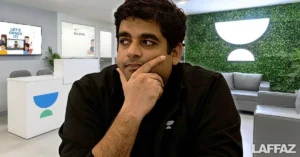Named after the father of the Indian Space Programme Vikram Sarabhai, ISRO’s Vikram lander successfully landed on the Moon at precisely 06:04 PM IST. India has become the first country to land on Moon’s South Pole.
Chandrayaan-3 spacecraft was launched on 14 July 2023 to carry out the third and the most recent Indian lunar exploration mission under the Chandrayaan programme of ISRO. It consists of a lander named Vikram and a rover named Pragyan.
In July 2019, four years exact, India launched Chandrayaan-2 which also consisted of the Vikram lander and Pragyan rover. The space mission failed as the lander crash-landed on the moon. The communication between the lander and the mission control station on Earth was lost due to a software glitch. The Vikram had reached an altitude of 2.1 km above the Moon’s surface.
Since then, ISRO consistently worked on eliminating challenges and better prepared Vikram for the success of Chandrayaan-3.
Speaking of which, ISRO chairman S Somanath explains,
“There are a lot of improvements on the lander. Basically, what were the deficiencies we were trying to overcome? One is the lander legs, which we expected could have withstood a higher velocity [during Chandrayaan-2]. So how much can we increase the velocity tolerance in the available structure? We have enhanced the landing velocity to 3m/second from 2m/second. That means even at 3m/sec, the lander will not crash or break [its legs],”
Another scientist who was a part of Chanrayaan-2 explained how Vikram was programmed for better speed control capability,
“A landing/touchdown velocity of about 2m/second is ideal and safe. And it is good that the tolerance will be for 3m/second, which means in case the best situation is not there, the lander will still do its job.” said the scientist
“Third, we have added a new sensor called the laser doppler velocity metre, which will look at the lunar terrain. And through laser source sounding, we will be able to get components of three velocity vectors. We will be able to add this to the other instruments available, thereby creating redundancy in measurement,” Somanath explained
Besides this, more fuel was added to Vikram to handle more disruptions and to warrant its “ability to come back”
Somanath also shared that ISRO has extended solar panels and panel area to generate power even if it lands in a different orientation and is not facing the Sun. It also has additional TTC (tracking, telemetry and command) antennas for redundancy.
“But the major part of the preparations was dedicated to testing. The whole of the last two years went for testing and not changes. The amount of tests we’ve done is much more than what was done during Chandrayaan-2. This is in terms of autonomous flights, helicopter flights, crane-mode landing simulation tests, drop tests, software simulation testbeds which were newly made to evaluate potential failures and recovery options etc,” Somanath said in a statement to TOI
Chandrayaan 3’s soft-landing achieved, the rover module will now embark on its 14-day assignment to carry out the tasks mandated by the ISRO scientists.
Its duties include experiments to further understand the lunar surface.
According to ISRO, Lander and the Rover have five scientific payloads which have been placed inside the Lander Module (LM).
Rover’s Alpha Particle X-Ray Spectrometer (APXS) will be used to derive the chemical composition and infer mineralogical composition to further enhance the understanding of the lunar surface.
Laser Induced Breakdown Spectroscope (LIBS) will determine the elemental composition of the lunar soil and rocks around the Moon’s landing site.
The deployment of Rover to carry out in-situ scientific experiments would scale new heights in lunar expeditions, ISRO said.
Live video of Chandrayaan-3 soft landing
ⓘ As part of our ongoing support for startups and SMEs, LAFFAZ Media publishes feature and resource articles that may include references and links to external websites. These inclusions are selected at our editorial discretion to provide valuable information to our readers. LAFFAZ Media does not control, endorse, or assume responsibility for the content or practices of external websites. For more details, please refer to our Terms and Conditions.






